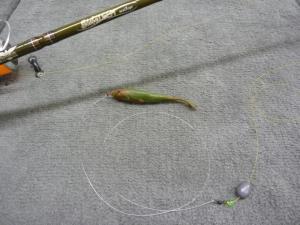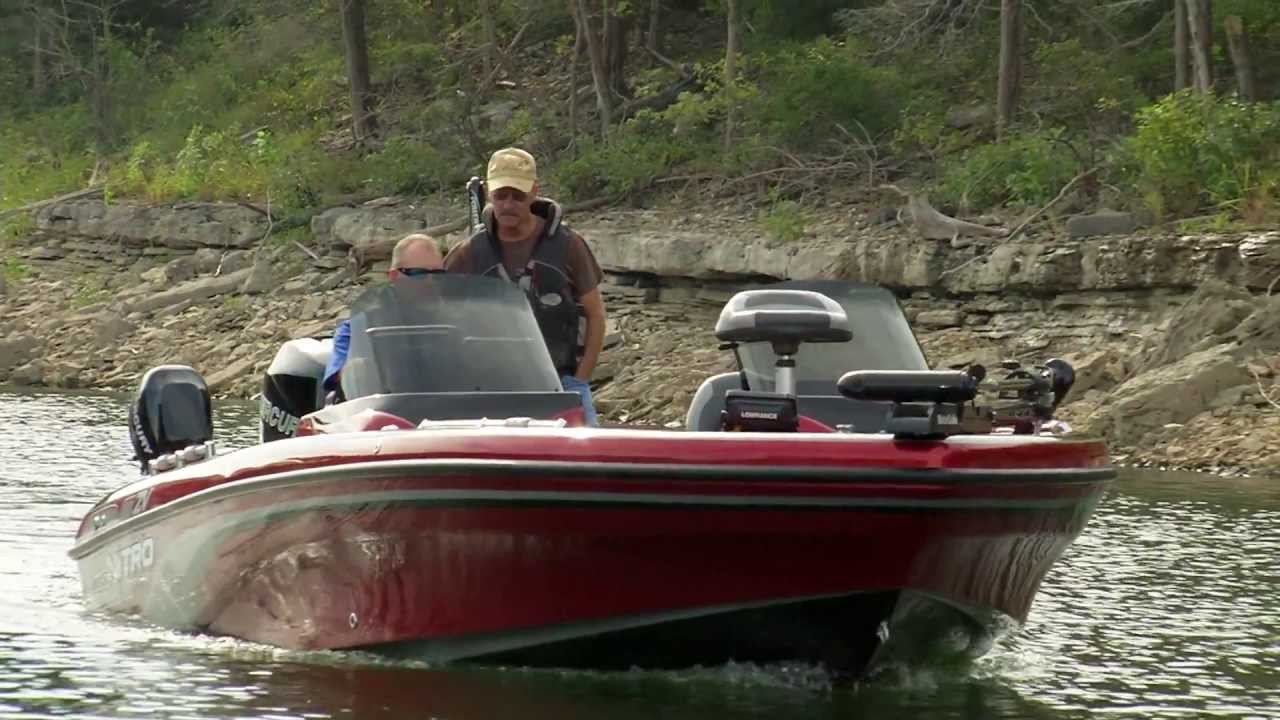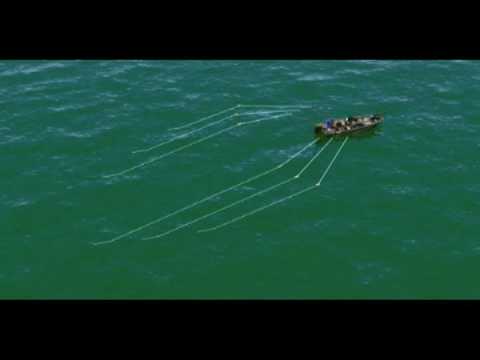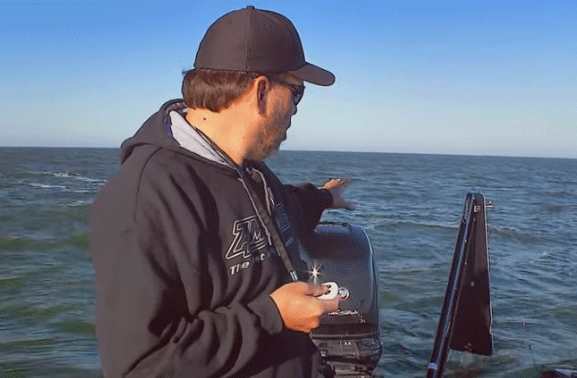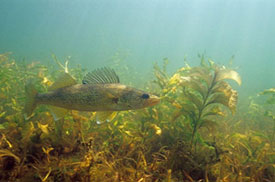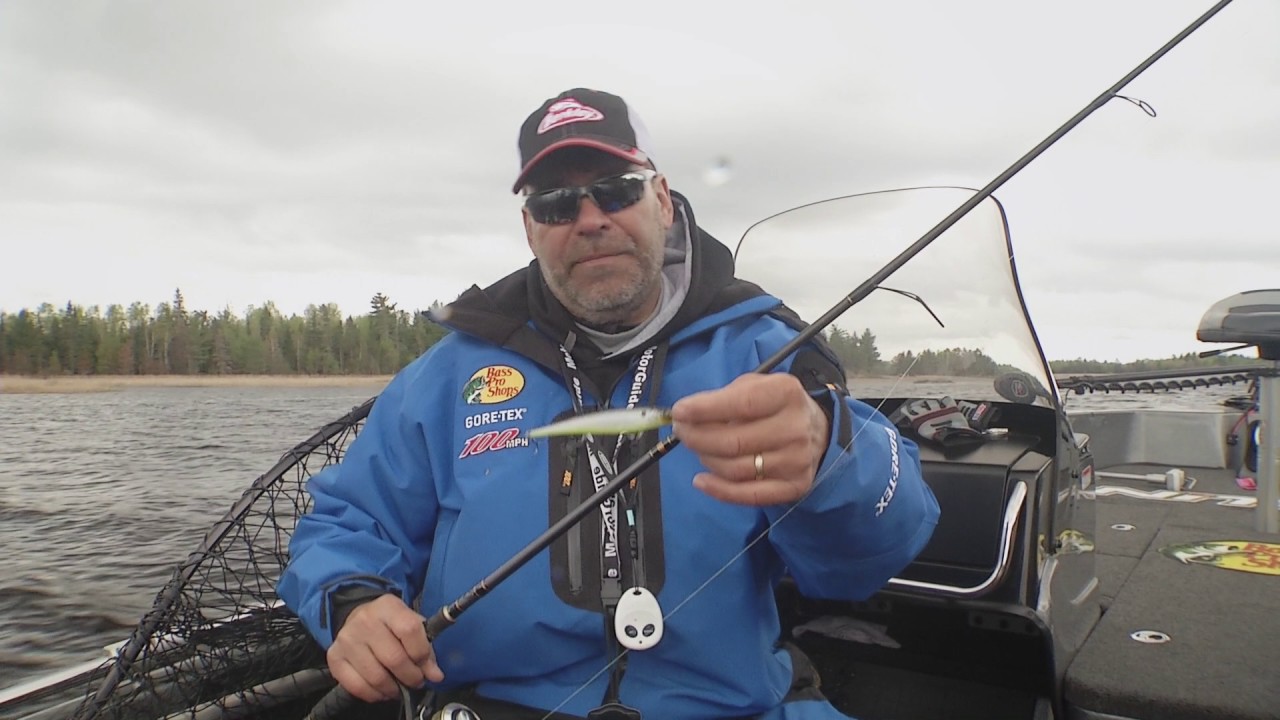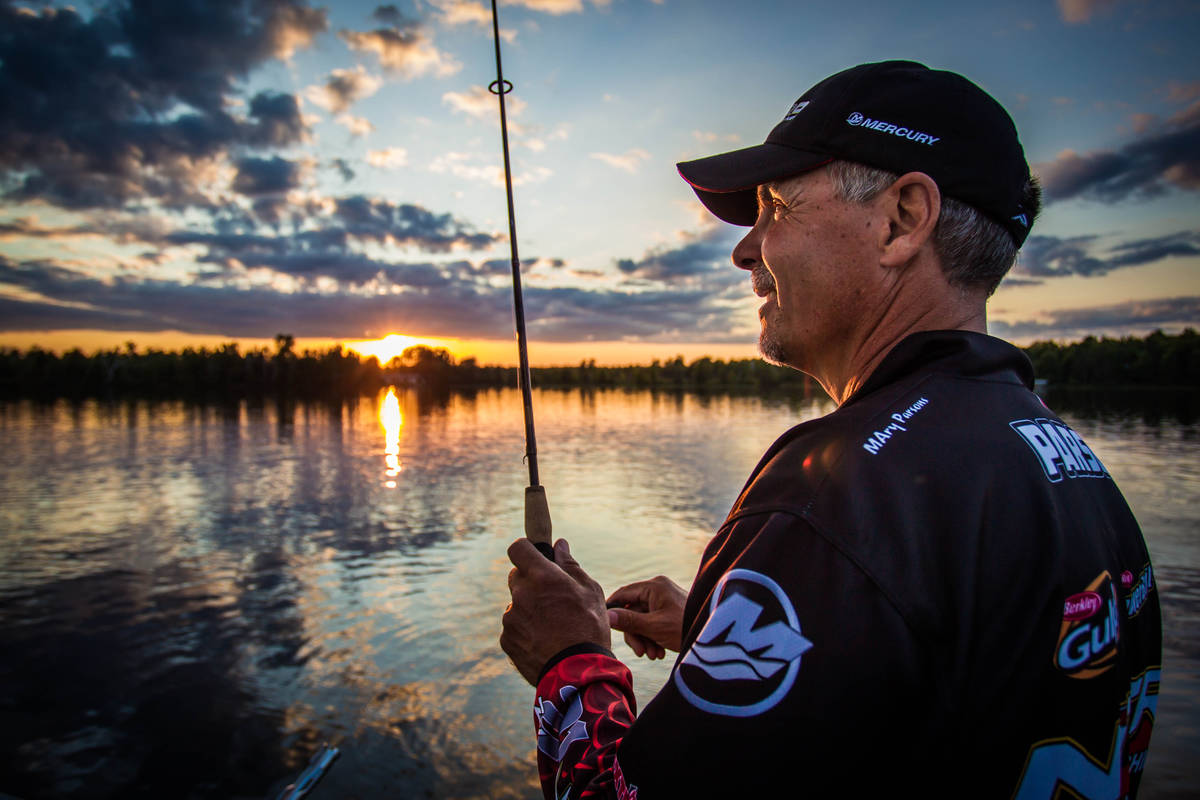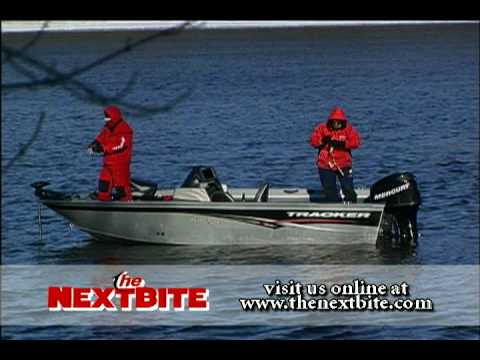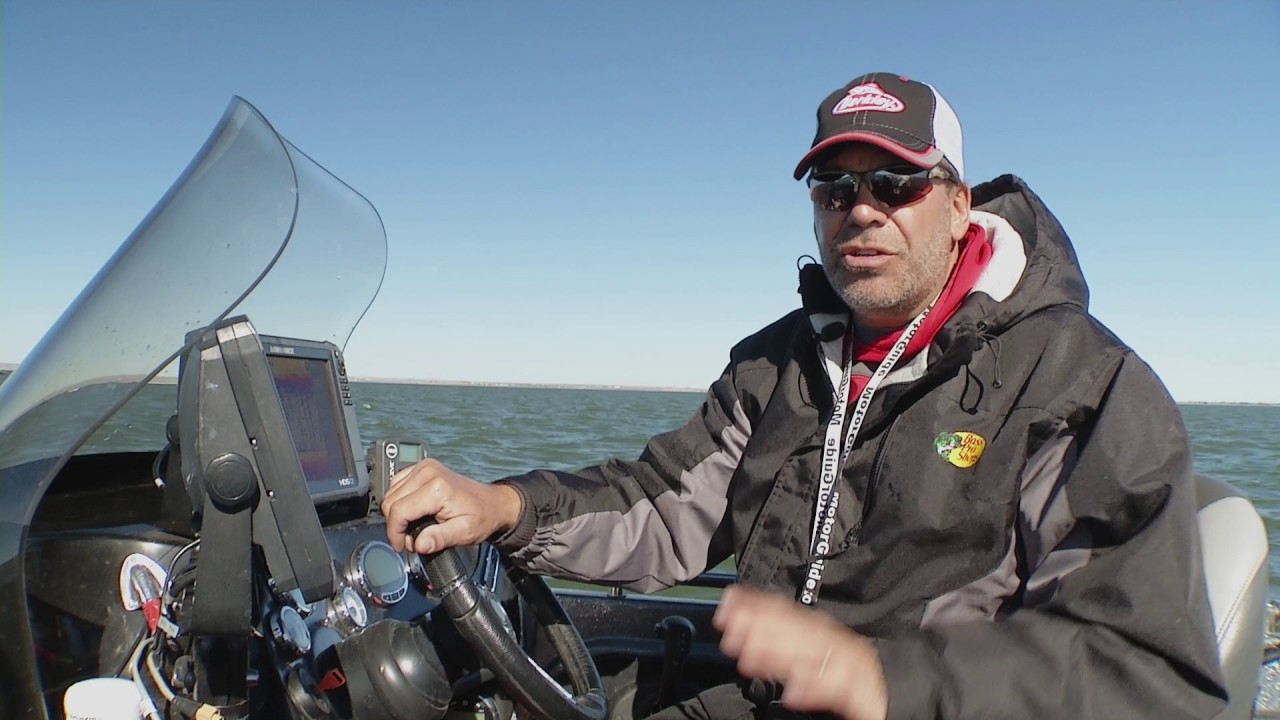
Slip bobbers are a good choice when walleyes are concentrated on a rock pile or reef, particularly if there’s some wind. I consider them whenever the area is too rocky for jigs and the fish won’t hit crankbaits.
Total Solutions Technique
You can cover a wide area without re-anchoring.After identifying a likely fishing area, I anchor upwind about two boat-lengths away from it and set my float stops so the rigs will just clear the shallowest point of the structure. By adjusting rod position, where the anchor line is tied to the boat, and turning the main engine, you can cover a wide swathe of structure without re-anchoring.
A float rig balanced so the fish feels minimal resistance is ideal. On the business end of the line, you can tip a jig or plain hook with a small minnow, leech or nightcrawler.
Knowing when to set the hook is critical. Unless I’m in timber like at Devils Lake, North Dakota, I let the fish take it awhile. A walleye will typically pull the float under and run with the bait, stop, and then start running again. When it begins that second run, I reel up any slack and wait until I feel the weight of the fish, then set the hook.
Total Solutions Equipment
A 7½-foot, medium-light graphite rod is ideal for slip bobbering. I like Berkley’s Series OneSOS761ML. The extra length is great for taking up slack before you set the hook.
An Abu Garcia Cardinal C801 or C501ALB spinning reel will match nicely with this rod. I’ll spool it with 4- to 6-pound-test Berkley XL Clear; water clarity dictates which one (lighter in clear water, of course).
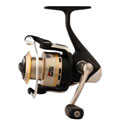 Abu Garcia® Cardinal® 800 |
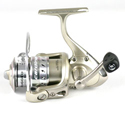 Abu Garcia® Cardinal® 500 ALB |
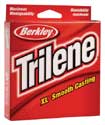 Berkley® Trilene XL® |

